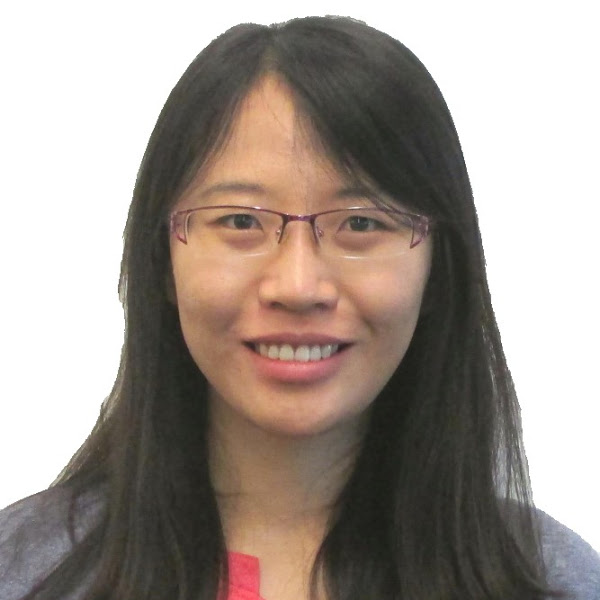
Yuan Liu
Yuan is a researcher and engineer in Google Research. She is currently working on post-training of large language models, from Med-PaLM, Gemini Pro, Gemini ultra, to the latest Gemini 1.5 Pro. Previously, she led dermatology AI initiatives at Google, with a focus on developing AI assistant tools for skin conditions. Her work has been published in 15+ journals and conferences such as Nature Medicine/NeurIPS/CVPR-W, and has led to the launch of products like DermAssist and Dermatology feature in Google Lens. Before joining Google, Yuan completed her PhD in medical image analysis at Vanderbilt University. She is also an active member of the research community, serving as conference workshop co-chair, guest editor, and reviewer.
Authored Publications
Sort By
Google
Closing the AI generalisation gap by adjusting for dermatology condition distribution differences across clinical settings
Rajeev Rikhye
Aaron Loh
Grace Hong
Margaret Ann Smith
Vijaytha Muralidharan
Doris Wong
Michelle Phung
Nicolas Betancourt
Bradley Fong
Rachna Sahasrabudhe
Khoban Nasim
Alec Eschholz
Basil Mustafa
Jan Freyberg
Terry Spitz
Kat Chou
Peggy Bui
Justin Ko
Steven Lin
The Lancet eBioMedicine (2025)
Health equity assessment of machine learning performance (HEAL): a framework and dermatology AI model case study
Terry Spitz
Malcolm Chelliah
Heather Cole-Lewis
Tiam Jaroensri
Geoff Keeling
Stephanie Farquhar
Qinghan Xue
Jenna Lester
Cían Hughes
Patricia Strachan
Fraser Tan
Peggy Bui
Craig Mermel
Lily Peng
Sunny Virmani
Ivor Horn
Cameron Chen
The Lancet eClinicalMedicine (2024)
Differences between Patient and Clinician Submitted Images: Implications for Virtual Care of Skin Conditions
Rajeev Rikhye
Grace Eunhae Hong
Margaret Ann Smith
Aaron Loh
Vijaytha Muralidharan
Doris Wong
Michelle Phung
Nicolas Betancourt
Bradley Fong
Rachna Sahasrabudhe
Khoban Nasim
Alec Eschholz
Kat Chou
Peggy Bui
Justin Ko
Steven Lin
Mayo Clinic Proceedings: Digital Health (2024)
Detecting shortcut learning for fair medical AI using shortcut testing
Alexander Brown
Nenad Tomašev
Jan Freyberg
Jessica Schrouff
Nature Communications (2023)
Robust and data-efficient generalization of self-supervised machine learning for diagnostic imaging
Laura Anne Culp
Jan Freyberg
Basil Mustafa
Sebastien Baur
Simon Kornblith
Ting Chen
Patricia MacWilliams
Sara Mahdavi
Megan Zoë Walker
Aaron Loh
Cameron Chen
Scott Mayer McKinney
Jim Winkens
Zach William Beaver
Fiona Keleher Ryan
Mozziyar Etemadi
Umesh Telang
Lily Hao Yi Peng
Geoffrey Everest Hinton
Neil Houlsby
Mohammad Norouzi
Nature Biomedical Engineering (2023)
Race- and Ethnicity-Stratified Analysis of an Artificial Intelligence–Based Tool for Skin Condition Diagnosis by Primary Care Physicians and Nurse Practitioners
David Way
Vishakha Gupta
Yi Gao
Guilherme De Oliveira Marinho
Jay David Hartford
Kimberly Kanada
Kunal Nagpal
Lily Hao Yi Peng
Carter Dunn
Susan Jen Huang
Peggy Bui
(2022)
Diagnosing failures of fairness transfer across distribution shift in real-world medical settings
Jessica Schrouff
Sanmi Koyejo
Eva Schnider
Krista Opsahl-Ong
Alex Brown
Diana Mincu
Christina Chen
Silvia Chiappa
Proceedings of Neural Information Processing Systems 2022 (2022)
Does Your Dermatology Classifier Know What It Doesn't Know? Detecting the Long-Tail of Unseen Conditions
Aaron Loh
Basil Mustafa
Nick Pawlowski
Jan Freyberg
Zach William Beaver
Nam Vo
Peggy Bui
Samantha Winter
Patricia MacWilliams
Umesh Telang
Taylan Cemgil
Jim Winkens
Medical Imaging Analysis (2021)
Supervised Transfer Learning at Scale for Medical Imaging
Aaron Loh
Basil Mustafa
Jan Freyberg
Neil Houlsby
Patricia MacWilliams
Megan Wilson
Scott Mayer McKinney
Jim Winkens
Peggy Bui
Umesh Telang
ArXiV (2021)
Development and Assessment of an Artificial Intelligence–Based Tool for Skin Condition Diagnosis by Primary Care Physicians and Nurse Practitioners in Teledermatology Practices
David Way
Vishakha Gupta
Yi Gao
Guilherme De Oliveira Marinho
Jay David Hartford
Kimberly Kanada
Kunal Nagpal
Lily Hao Yi Peng
Carter Dunn
Susan Jen Huang
Peggy Bui
JAMA Network Open (2021)
